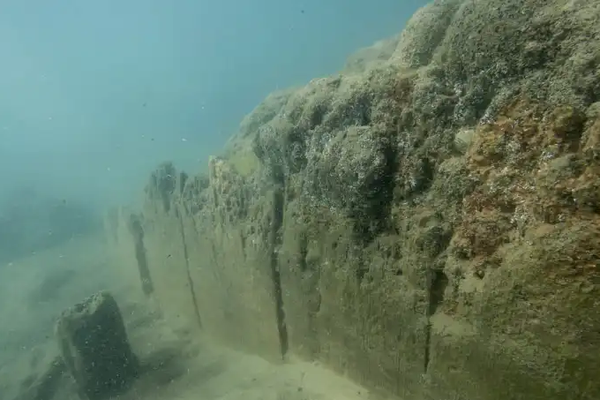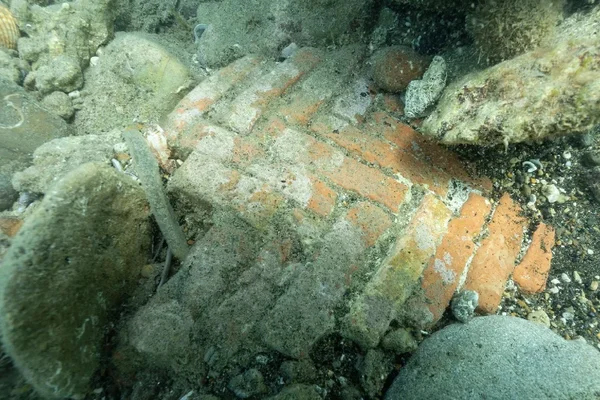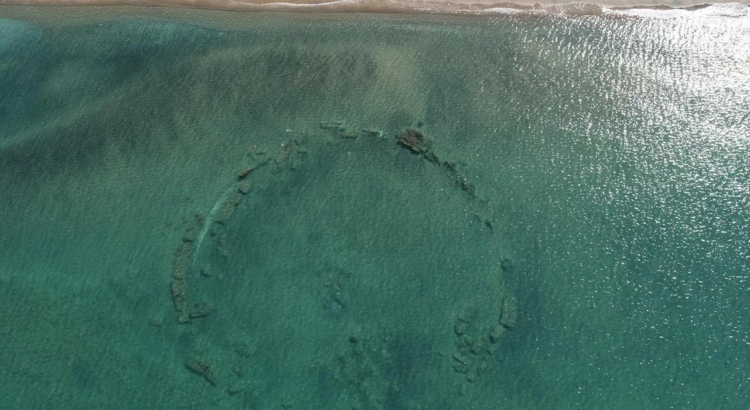The Colosseum and Pantheon may be among the most iconic buildings of Ancient Rome, but beyond the walls of Italy’s legendary capital, there lie countless treasures just waiting to be uncovered.
Indeed, many of these lie buried, not underground but underwater. And now, archaeologists have discovered a vast Roman structure off the coast of tourist hotspot Puglia.
A previous study, conducted in 2021, found a column made of cipollino marble (an elaborately-swirled white-green stone), in the waters off Campo di Mare, in the west of the country.
This then led to the discovery of a submerged circular structure measuring 50 metres (around 165 feet) in diameter.
Experts believe that the construction was once a pavilion belonging to a grand Roman villa.

The pavilion walls are notable for their thickness and resilience against the conditions(Soprintendenza Archeologia Belle Arti Paesaggio Etruria Meridionale)
So far, excavations have identified two belts of brick walls, built on a layer of clay. The walls were constructed using a double layer of triangular bricks containing pebbles and mortar.
The complex method used here indicates the advanced nature of engineering at the time, particularly when ensuring resilience against the harsh marine environment, as Arkeo News notes.
And whilst scientists are yet to date the pavilion, they have found clues as to its age in some of the materials used to build it.
Researchers from the Soprintendenza Archeologia Belle Arti Paesaggio Etruria Meridionale unearthed opus spicatum flooring at the site – a type of masonry consisting of bricks, tiles or cut stone laid in a herringbone pattern, which was popular during Roman times.

A section of the opus spicatum flooring, which gives a clue as to the pavilion’s age(Soprintendenza Archeologia Belle Arti Paesaggio Etruria Meridionale)
The team also found traces of a material called opus signinum – a form of Roman concrete comprising gravel, small pieces of stone or terra-cotta fragments cemented in lime or clay.
Opus signinum was the main form of pavement used in Roman houses in the 1st century BC, the Encyclopedia Britannicastates. However, by the second century AD, it was rapidly replaced by mosaics made up of small, shaped pieces of stone, ceramic, or glass tiles.
According to a statement published by the Soprintendenza Archeologia Belle Arti Paesaggio Etruria Meridionale, these architectural elements hint that the pavilion was part of a luxurious Roman villa which remains buried under sand somewhere nearby, just waiting to be discovered.
Work is now underway to investigate the rest of the site and ensure its protection from coastal erosion.




